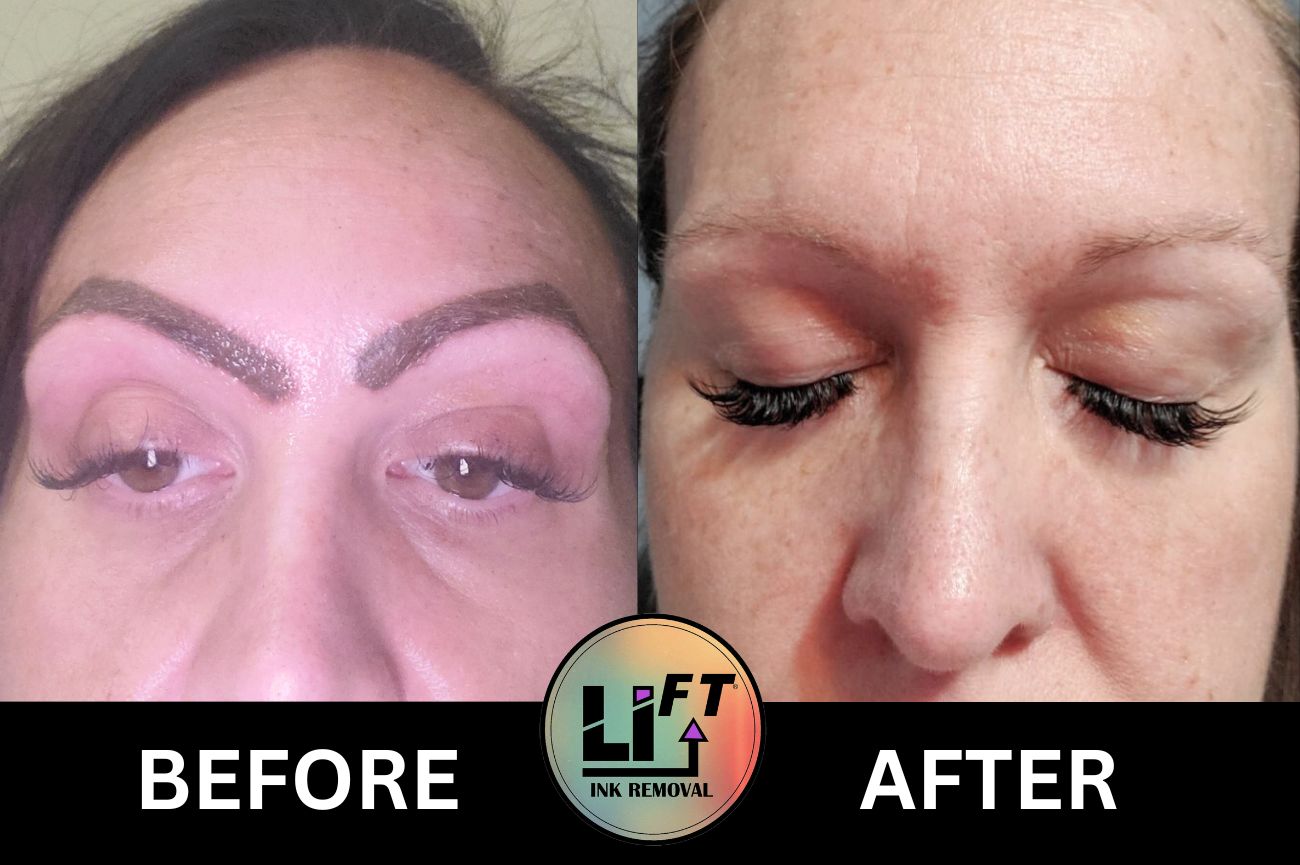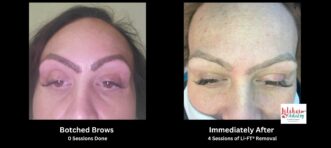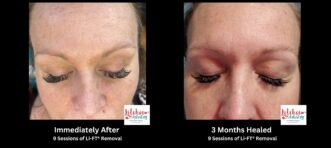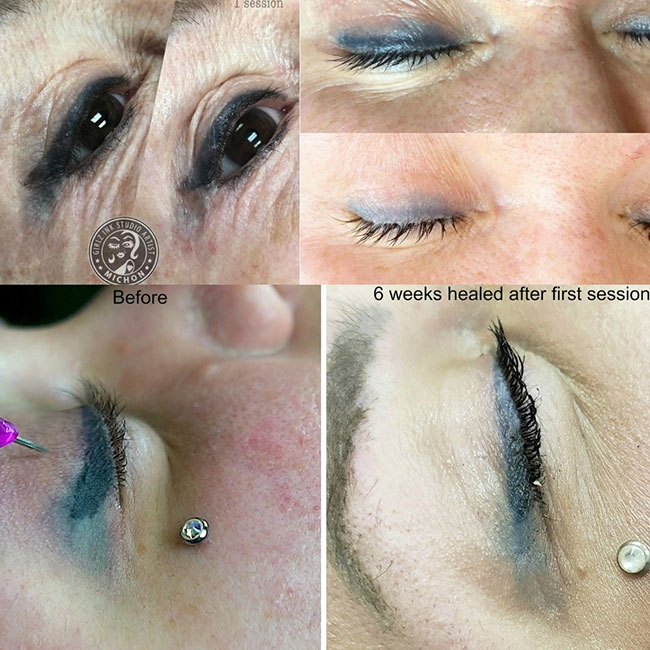 This is a case of microblading gone bad, real bad. Yes, this is or was supposed to be a microbladed eyebrow. Thank goodness for Li-FT® saline removal. As you probably already know by know, microblading is the technique of using a hand tool with a row of needles to implant pigment replicating the natural look of eyebrow hair. Microblading is a popular technique and a big part of the permanent makeup industry. It requires specialized training and can take several years to reach the level of high skill and beautiful execution. Unfortunately, right now, the permanent makeup industry is inodiated with people who possess no artistic ability, have taken a two day class and are responsible for they type of bad work this client received. This is not only happening in the area of microblading, this is happening in all areas of permanent makeup.
This is a case of microblading gone bad, real bad. Yes, this is or was supposed to be a microbladed eyebrow. Thank goodness for Li-FT® saline removal. As you probably already know by know, microblading is the technique of using a hand tool with a row of needles to implant pigment replicating the natural look of eyebrow hair. Microblading is a popular technique and a big part of the permanent makeup industry. It requires specialized training and can take several years to reach the level of high skill and beautiful execution. Unfortunately, right now, the permanent makeup industry is inodiated with people who possess no artistic ability, have taken a two day class and are responsible for they type of bad work this client received. This is not only happening in the area of microblading, this is happening in all areas of permanent makeup.
What happened in this case is that the technician who did this went way too deep, they implanted the pigment way too deep causing the pigment to migrate and blur together. Implanting the pigment is also why the color is ashy and unattractive. When pigment is implanted too deep it can it almost always will cause these problems and in many cases it can cause scarring. This is why it is so very important that anyone seeking permanent makeup, whether it be microblading, ombre brows, powder brows, eyeliner or lips…to do their research and only allow a highly trained, experienced and talented artist get near their face. This is needles and ink we are talking about and too many people are going to unskilled and unqualified people. Look at portfolios and demand to see HEALED work and lots of it. Good eyebrows ain’t cheap and cheap eyebrows ain’t good. So…be prepared to pay for good work so you do not end up like this client and thousands of others.
This saline removal journey took a total of three sessions. The sessions were spaced 8 weeks apart to allow the skin to heal fully and completely. The healing time of 8 weeks is very important in keeping the integrity of the skin. She was awesome, patient and just wanted these puppies gone and that’s exactly what I was able to accomplish for her. I am grateful for her trust in me and the process of saline removal.
Once her brows have healed 3 to 4 months we can then give her a beautiful pair of brows…the brows she should have had in the first place. Due to the scar tissue caused by the person who did this, she will not be a good candidate for the microblading technique. However, she is now a great candidate for an Ombre or powder brow and whichever style she chooses, it will look amazing on her. I will make damn sure of that?

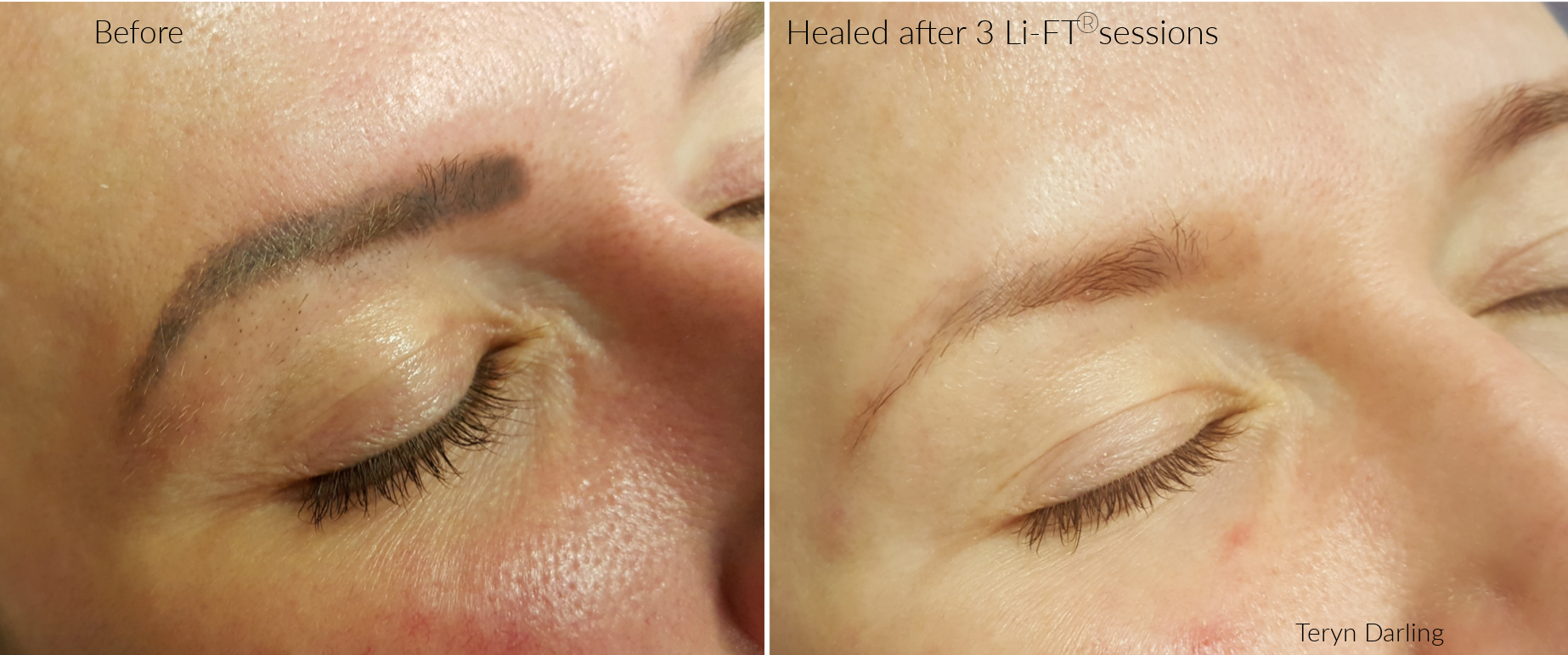
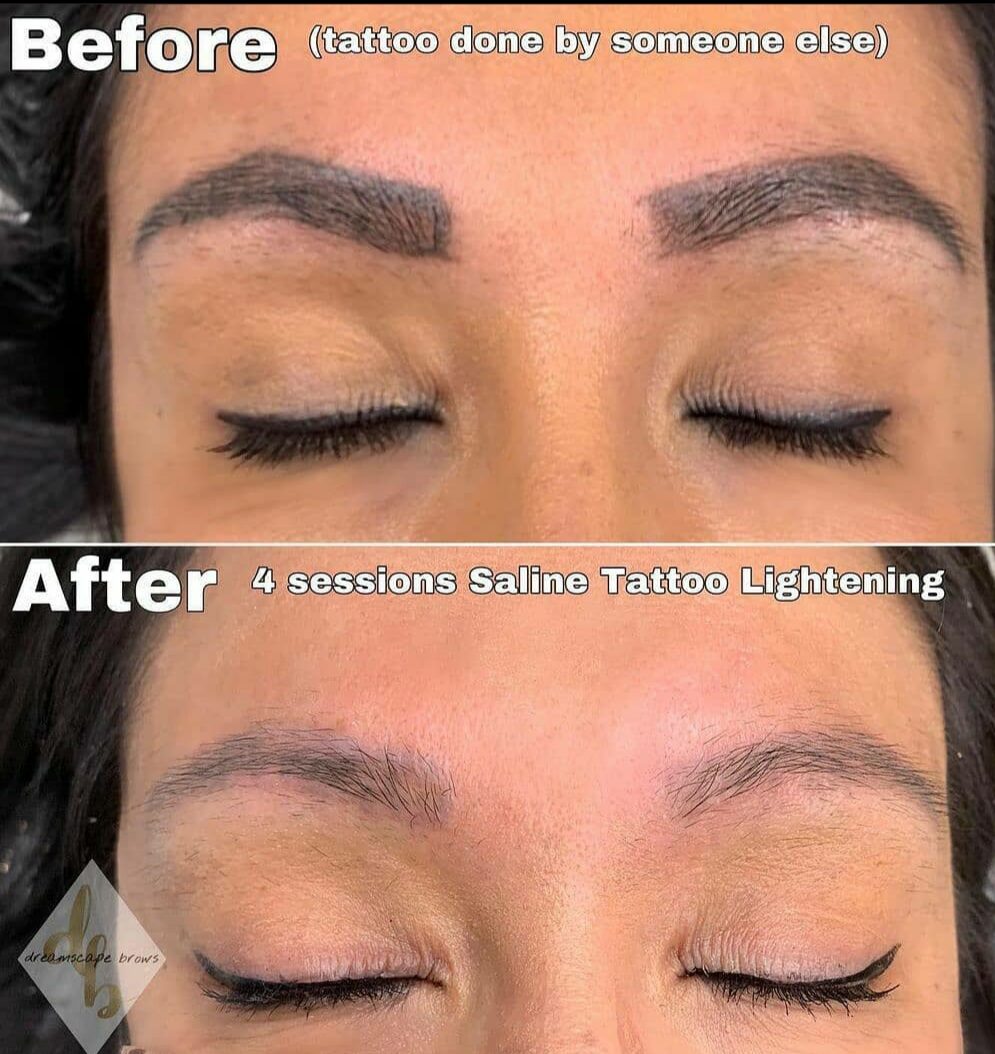
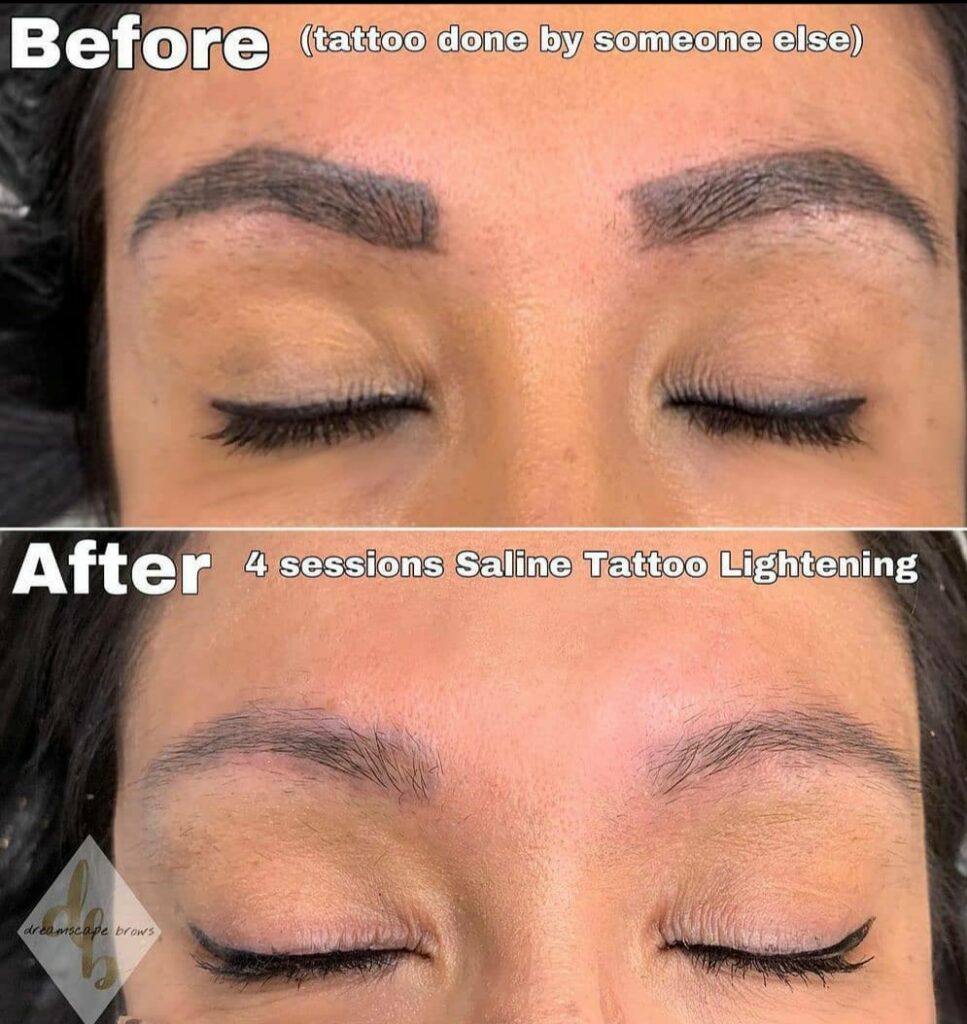 Saline removal is a procedure that uses a saline solution to lift permanent makeup pigment or tattoo ink up and out of the skin. It can be used to lighten or fully remove bad or unwanted permanent makeup or microblading procedure as well as some body tattoos. Saline removal is the most popular form of lightening and removing bad work or botched ink as some like to phrase it. The Li-FT® Saline Removal Solution was used to lighten these poorly done eyebrows to the point they are almost non-visible.
Saline removal is a procedure that uses a saline solution to lift permanent makeup pigment or tattoo ink up and out of the skin. It can be used to lighten or fully remove bad or unwanted permanent makeup or microblading procedure as well as some body tattoos. Saline removal is the most popular form of lightening and removing bad work or botched ink as some like to phrase it. The Li-FT® Saline Removal Solution was used to lighten these poorly done eyebrows to the point they are almost non-visible.